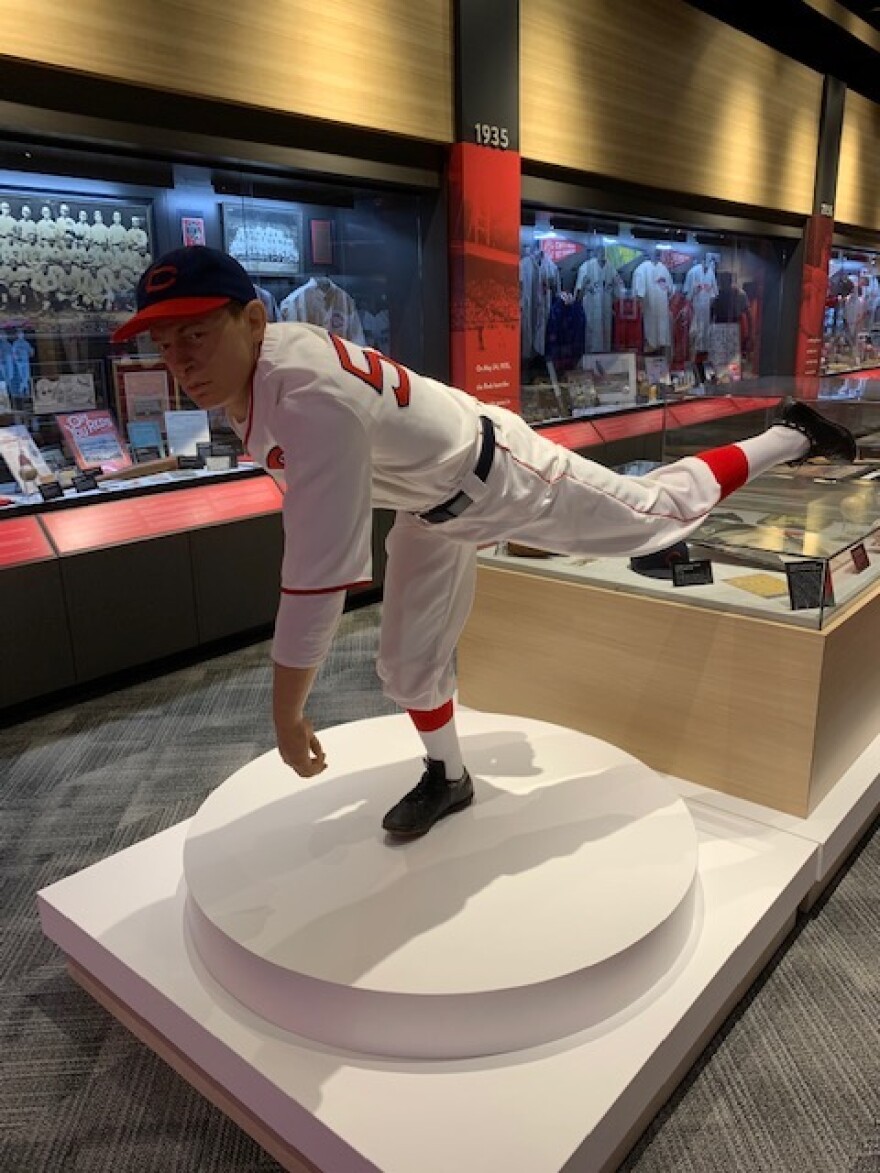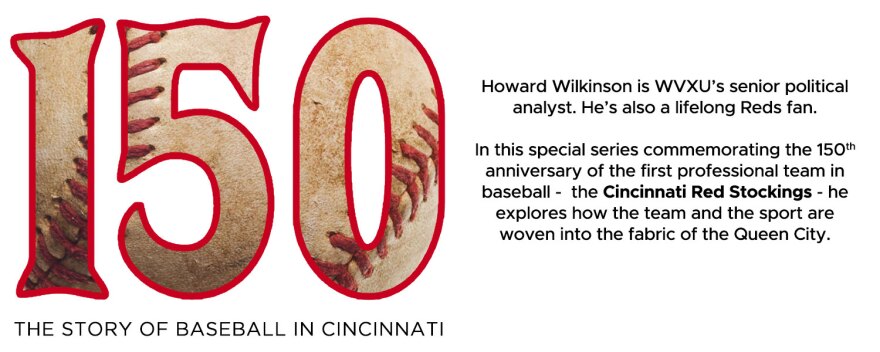If you had been in Al Lopez Field in Tampa, Fla., in the 1980s, watching a Cincinnati Reds spring training game, you probably wouldn't have noticed the tall, thin old man sitting in the seats behind home plate, a scorecard in his hand.
Just another old snowbird from up north, you might well have thought.
You could probably have counted on two hands the number of fans in the stands who knew who this particular Reds fan was.
Actually, the old man was a Reds legend – left-handed pitcher Johnny Vander Meer, who, in June 1938, became the first and only pitcher in Major League history to throw back-to-back no-hitters.
The son of immigrants from Holland, who grew up in Midland Park, N.J., became known as the "Dutch Master" (after a famous cigar) when he accomplished a feat at the age of 24 that is likely never to be repeated.
It made The Dutch Master an instant national celebrity.

Vander Meer had labored in the minor leagues for seven years, struggling with control of his fastball, and made his major league debut in 1937. But during the season, the Reds sent him down to Syracuse to work on his control.
In the off-season, Vander Meer wrote to Reds general manager Warren Giles, saying "I know I'm a better ballplayer than the showing I made in the past season."
Giles agreed and invited Johnny to the Reds' 1938 spring training camp in Tampa. The Reds had a new manager, Bill McKechnie, who had a reputation for fixing what was wrong with young pitchers.
McKechnie talked his friend, future Hall of Famer Lefty Grove, into working with Vander Meer. For Grove, it was an easy fix – he just had to teach Vander Meer how to throw overhand instead of half side-armed.
Vander Meer made the team, but had an up-and-down start to the season, switching between being a starter and a reliever.
McKechnie kept the faith in his young lefty, although sometimes it was a challenge to his patience.
"He was capable of periods of dazzling brilliance and then he would hit the other extreme and be absolutely ineffective,'' McKechnie said years later.
Vander Meer took the mound on June 11, 1938 at Cincinnati's Crosley Field to face the mediocre Boston Bees (later the Braves) in a day game. Boston had a team batting average of .245, the worst in the league. Only 5,814 souls were in the seats at Crosley that day, although you can bet that in the days to come, 10 times that many would claim to have been there.
It was, of course, no-hitter No. 1. Vander Meer walked three and struck out four in a workman-like performance.
Vander Meer's teammates hoisted him on their shoulders and carried him off the field to the cheers of the sparse crowd.
Four days later, the Reds found themselves in Ebbets Field in Brooklyn, to play the first night game in Dodgers' history. The Reds had become the first major league team to play under the lights three years before.
It was Vander Meer's next turn to pitch.

It probably never occurred to anyone – either on the Cincinnati side or the Brooklyn side – that Vander Meer might throw a second no-hitter in a row.
About 500 friends and family from Vander Meer's hometown were among the 38,748 who crammed the legendary ball park for what was as much a carnival under the lights as a ball game.
The Bambino, The Sultan of Swat, Babe Ruth, was on hand. Ohio's own Jesse Owens, who had shown Adolf Hitler what a black athlete could do in the 1936 Olympics in Berlin, raced ballplayers on the field as part of the pre-game entertainment.
Vander Meer went to the Ebbets Field mound in the bottom of the first inning with no idea that no one had ever thrown back-to-back no-hitters and no expectation of doing so.
But, by the ninth inning, the Dodgers had no hits and two outs. One more out and Johnny Vander Meer would become an immortal.
The fiery Dodgers shortstop Leo Durocher hit a ball to deep right field that brought the sell-out crowd to its feet. By that time, even the Dodger fans were rooting for Vander Meer to get his no-hitter.
On the next pitch, Johnny thought he had caught the corner of the plate for strike three, but umpire Bill Stewart called it a ball. Reds catcher Ernie Lombardi was so mad it seemed that his head would explode.
Vander Meer paid it no mind and threw another pitch. On this one, Durocher lifted a lazy fly ball – a can 'o corn – to Reds center fielder Harry Craft.
And the celebration was on.
He was mobbed by his teammates as he hustled off the field to avoid thousands of fans who had run onto the field to congratulate him and slap him on the back.
Vander Meer was in the dugout before he learned he had accomplished something that had never happened before in Major League Baseball: back-to-back no-hitters.
His next start was in Boston against the Bees. He pitched three and a third scoreless innings before he gave up a single to Debs Garms of the Bees.
Vander Meer was glad to see it end.
"The pressure had become too much and I was glad to get out from under it,'' Vander Meer told the baseball writers. "I think if I'd have had a $10 bill in my baseball pants I would have gone over to first base and handed it to Garms."
He was chosen to be the starting pitcher in the 1938 All Star Game, which was held that year at Crosley Field. He pitched three scoreless innings and gave up only one hit.
He was named The Sporting News' Major League Player of the Year.
His best years ended up being 1941 through 1943, when he led the league in strikeouts each year, with a combined total of 49 wins and 41 losses.
In 1944 and 1945, he served in the U.S. Navy as part of a team of major leaguers who played all-star games to entertain the troops.
After that, his pitching career went bad. He ended with a record of 119 wins and 121 losses after being released by the Cubs in 1950 and the Indians in 1951. He managed in the minor leagues for 10 years before going to work for Schlitz Brewing Co.
Then the legendary pitcher became a true retiree, spending his days fishing in Tampa Bay and watching Reds spring training games. He died in Oct. 1997 at the age of 82.
There was one honor left for the pitcher whose plaque hangs in the Reds Hall of Fame and Museum.

Earlier this week, the museum staff erected a life-sized (and very life-like) statue of Vander Meer in his wind-up. It is extremely detailed, right down to the dirt in his spikes.
That old man sitting in the stands at Al Lopez Field all those years ago would have enjoyed seeing it.




